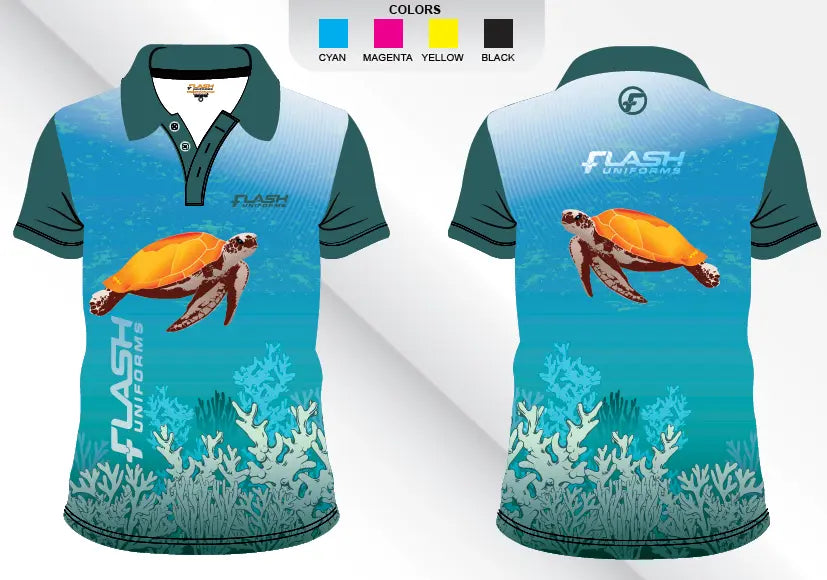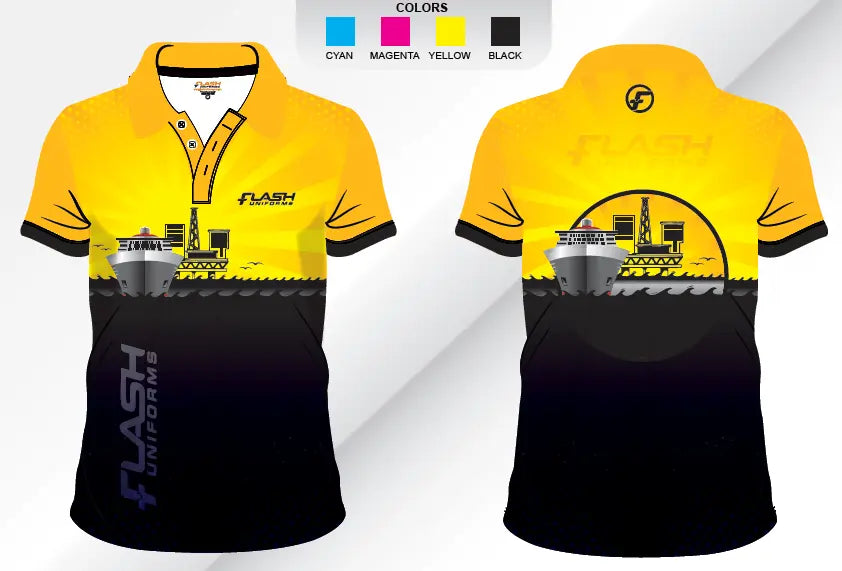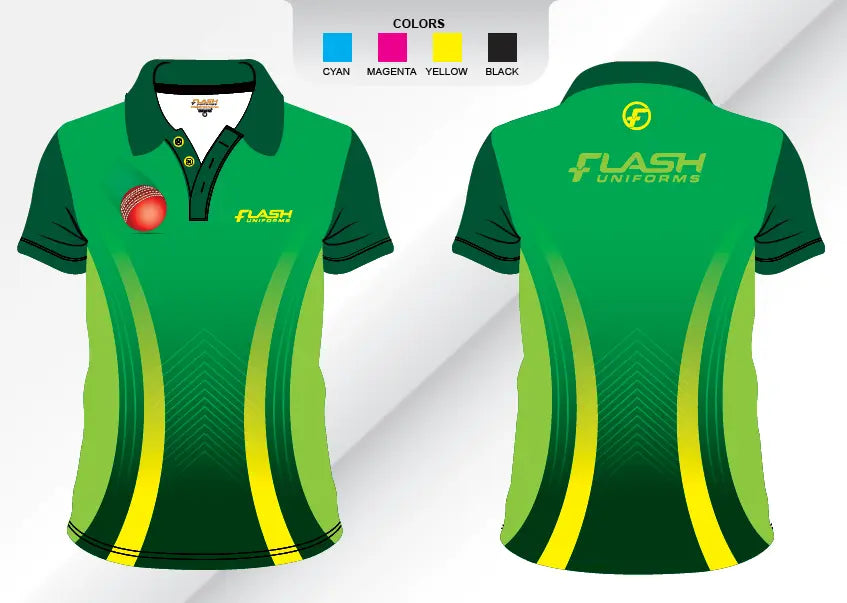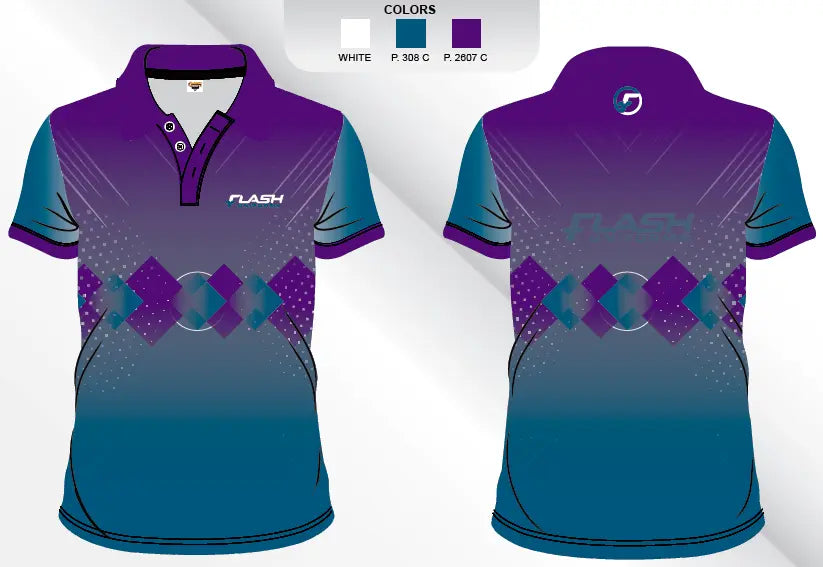Custom Sublimation Polo Shirts
-
Custom Sublimated Corporate Polo Shirt SP23
Elevate Your Brand with Custom Sublimated Corporate Polo Shirt SP23 Custom sublimated Polos. Minimum 15 Polo Shirts required for sublimation of the same design. Add the...
Regular price $36.99Sale price $36.99 Regular priceUnit price per -
Custom Sublimated Darts Polo Shirt SP40
Custom Sublimated Darts Polo Shirt SP40 Custom sublimated Polos. Minimum 15 Polo Shirts required for sublimation of the same design. Add the required quantity to cart...
Regular price $36.99Sale price $36.99 Regular priceUnit price per -
Custom Sublimated Polo Shirt New Zealand SP39
Custom Sublimated Polo Shirt New Zealand SP39, the ideal design for any Kiwi's Custom sublimated Polos. Minimum 15 Polo Shirts required for sublimation of the same...
Regular price $36.99Sale price $36.99 Regular priceUnit price per -
Custom Sublimated Polo Shirt Australia SP38
Custom Sublimated Polo Shirt Australia SP38, ideal for any sports team in the classic green and gold australian colors. Custom sublimated Polos. Minimum 15 Polo Shirts...
Regular price $36.99Sale price $36.99 Regular priceUnit price per -
Custom Sublimated Golf Polo Shirt SP37
Custom Sublimated Golf Polo Shirt SP37 Custom sublimated Polos. Minimum 15 Polo Shirts required for sublimation of the same design. Add the required quantity to cart...
Regular price $36.99Sale price $36.99 Regular priceUnit price per -
Custom Sublimated Polo Shirt SP36
Custom Sublimated Polo Shirt SP36 a design suitable for IT, telecoms, internet and computer companies. Custom sublimated Polos. Minimum 15 Polo Shirts required for sublimation of...
Regular price $36.99Sale price $36.99 Regular priceUnit price per -
Custom Sublimated Polo Shirt SP34
Custom Sublimated Polo Shirt SP34. Inspired by the ocean and ideal for your fishing trips and boat trips. Custom sublimated Polos. Minimum 15 Polo Shirts required...
Regular price $36.99Sale price $36.99 Regular priceUnit price per -
Custom Sublimated Camping Polo Shirt SP35
Custom Sublimated Polo Shirt SP35, ideal for camping trips, 4x4 and off-road adventures and trips. Custom sublimated Polos. Minimum 15 Polo Shirts required for sublimation of...
Regular price $36.99Sale price $36.99 Regular priceUnit price per -
Custom Sublimated Fishing Polo Shirt SP32
Custom Sublimated Fishing Polo Shirt SP32 Custom sublimated Polos. Minimum 15 Polo Shirts required for sublimation of the same design. Add the required quantity to cart...
Regular price $36.99Sale price $36.99 Regular priceUnit price per -
Custom Sublimated Mining Polo Shirt SP33
Custom Sublimated Mining Polo Shirt SP33 Ideal design for mining companies and oil and gas Custom sublimated Polos. Minimum 15 Polo Shirts required for sublimation of...
Regular price $36.99Sale price $36.99 Regular priceUnit price per -
Custom Sublimated Cricket Polo Shirt SP31
Custom Sublimated Cricket Polo Shirt SP31 Custom sublimated Polos. Minimum 15 Polo Shirts required for sublimation of the same design. Add the required quantity to cart...
Regular price $36.99Sale price $36.99 Regular priceUnit price per -
Custom Sublimated Polo Shirt SP30
Custom Sublimated Polo Shirt SP30 Custom sublimated Polos. Minimum 15 Polo Shirts required for sublimation of the same design. Add the required quantity to cart and...
Regular price $36.99Sale price $36.99 Regular priceUnit price per -
Custom Sublimated Badminton Polo Shirt SP29
Custom Sublimated Badminton Polo Shirt SP29 Custom sublimated Polos. Minimum 15 Polo Shirts required for sublimation of the same design. Add the required quantity to cart...
Regular price $36.99Sale price $36.99 Regular priceUnit price per -
Custom Sublimated Polo Shirt SP27
Custom Sublimated Polo Shirt SP27 Custom sublimated Polos. Minimum 15 Polo Shirts required for sublimation of the same design. Add the required quantity to cart and...
Regular price $36.99Sale price $36.99 Regular priceUnit price per -
Custom Sublimated Sports Polo Shirt SP28
Custom Sublimated Sports Polo Shirt SP28 Custom sublimated Polos. Minimum 15 Polo Shirts required for sublimation of the same design. Add the required quantity to cart...
Regular price $36.99Sale price $36.99 Regular priceUnit price per -
Custom Corporate Sublimated Polo Shirt SP26
Custom Sublimated Polo Shirt SP26 Custom sublimated Polos. Minimum 15 Polo Shirts required for sublimation of the same design. Add the required quantity to cart and...
Regular price $36.99Sale price $36.99 Regular priceUnit price per -
Custom Sublimated Polo Shirt SP25
Custom Sublimated Polo Shirt SP25 Custom sublimated Polos. Minimum 15 Polo Shirts required for sublimation of the same design. Add the required quantity to cart and...
Regular price $36.99Sale price $36.99 Regular priceUnit price per -
Custom Sublimated Polo Shirt SP24
Custom Sublimated Polo Shirt SP24 Custom sublimated Polos. Minimum 15 Polo Shirts required for sublimation of the same design. Add the required quantity to cart and...
Regular price $36.99Sale price $36.99 Regular priceUnit price per -
Custom Sublimated Rugby Polo Shirt SP22
Why Choose a Custom Sublimated Rugby Polo Shirt? Custom sublimated Polos. Minimum 15 Polo Shirts required for sublimation of the same design. Add the required quantity...
Regular price $36.99Sale price $36.99 Regular priceUnit price per -
Custom Sublimated Cricket Polo Shirt SP21
Elevate Your Game with Our Custom Sublimated Cricket Polo Shirt SP21 Custom sublimated Polos. Minimum 15 Polo Shirts required for sublimation of the same design. Add...
Regular price $36.99Sale price $36.99 Regular priceUnit price per -
Custom Sublimated Polo Shirt SP19
Custom sublimated Polos. Minimum 15 Polo Shirts required for sublimation of the same design. Add the required quantity to cart and checkout. We will email you...
Regular price $36.99Sale price $36.99 Regular priceUnit price per -
Custom Sublimated Polo Shirt SP20
Custom sublimated Polos. Minimum 15 Polo Shirts required for sublimation of the same design. Add the required quantity to cart and checkout. We will email you...
Regular price $36.99Sale price $36.99 Regular priceUnit price per -
Custom Sublimated Polo Shirt SP18
Custom sublimated Polos. Minimum 15 Polo Shirts required for sublimation of the same design. Add the required quantity to cart and checkout. We will email you...
Regular price $36.99Sale price $36.99 Regular priceUnit price per -
Custom Sublimated Polo Shirt SP17
Custom sublimated Polos. Minimum 15 Polo Shirts required for sublimation of the same design. Add the required quantity to cart and checkout. We will email you...
Regular price $36.99Sale price $36.99 Regular priceUnit price per

























